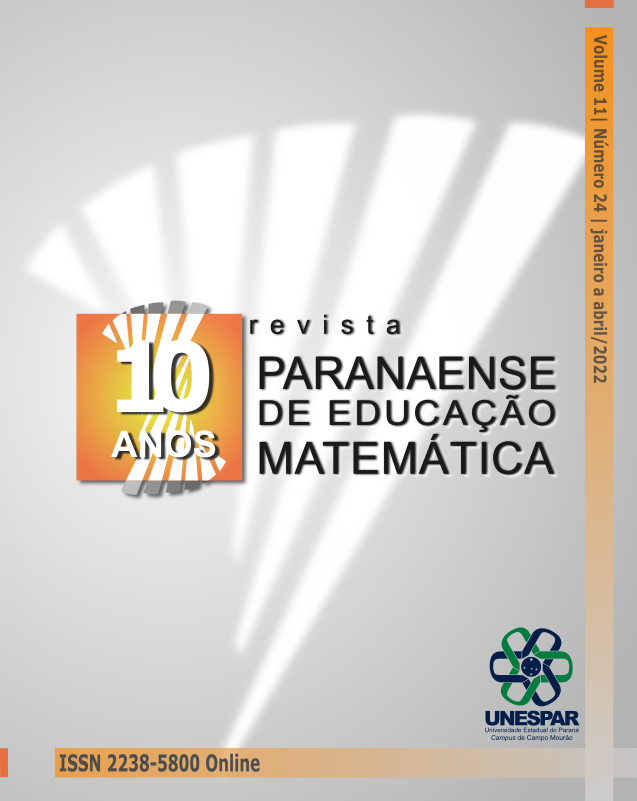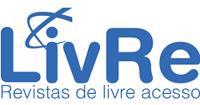SOMATÓRIOS: ONDE E COMO SÃO ABORDADOS?
Abstract
The central theme of this work is the use of summation symbology in teaching, including its interpretation and properties. We accept the premise that, in general, students feel uncomfortable in performing algebraic manipulations and solving problems where the Sigma notation is present. Aiming to help teachers mediate the learning related to this topic and its applications, we present a survey of "when" and "how" the notation of summation is present in secondary education and higher education in the degree courses in mathematics. As a result of this survey, we realized that, in general, at no time is the notation of summation an explicit object of study. This fact can justify the accepted premise. We conclude with the suggestion that: (i) at some point in their initial or continuing education, mathematics teachers carry out detailed studies of the notation and the properties of summation to improve their understanding of the subject; (ii) each class of high school students has, at some point, at least one lesson dedicated to the study and understanding of Sigma notation for sums. Additionally, we point out some references to find structured and concise classical summation theory (with a finite amount of terms). We also indicate one didactic module applicable in high school.
Downloads
References
BALESTRI, R. Matemática: interação e tecnologia. 2ª ed. São Paulo: Ed. Leya, 2016. (Coleção do Professor de Matemática, v. 1, 2, 3).
BRASIL. Orientações Curriculares para o Ensino Médio – Ciências da Natureza, Matemática e suas Tecnologias. Brasília, DF: Ministério da Educação, Secretaria de Educação Média e Tecnológica, 2000.
BRASIL. Diretrizes Curriculares Nacionais para os Cursos de Matemática, Bacharelado e Licenciatura. Parecer CNE/CES n. 1.302, de 06 de novembro de 2001. Brasília, DF: Conselho Nacional de Educação, 2001. Disponível em:
http://portal.mec.gov.br/cne/arquivos/pdf/CES13022.pdf. Acesso em: 21 abril 2021.
BRASIL. Base Nacional Comum Curricular. Brasília, DF: Ministério da Educação, Secretaria de Educação Básica, 2017. Disponível em:
http://basenacionalcomum.mec.gov.br/images/BNCC_EI_EF_110518_versaofinal_site.pdf. Acesso em: 21 abril 2021.
CAJORI, F. A History of Mathematical Notations. New York: Dover Publications, 1993.
CARGNIN, C.; BARROS, R. M. O. O conceito de integral de Riemann do ponto de vista da congruência semântica. REVEMAT: Revista Eletrônica de Educação Matemática, Florianópolis, v. 11, n. 1, pg. 16-35. 2016.
DANTE, L. R. Matemática Contexto e Aplicações. 2ª ed. São Paulo: Ed. Ática, 2014.
DELIZOICOV, D.; ANGOTTI, J. A. P. Metodologia do Ensino de Ciências. São Paulo: Cortez, 1990.
GALVÃO, A. T. Somas, somatórios e termos não inteiros. 2020. Dissertação (Programa de Pós-Graduação em Matemática em Rede Nacional - PROFMAT) - Universidade Estadual de Ponta Grossa, Ponta Grossa, 2020.
GALVÃO, A. T.; CHAGAS, J. Q. Uma introdução a somatórios fracionários: aprendendo a somar uma quantidade não inteira de parcelas. Revista Matemática Universitária, Rio de Janeiro, v. 2021, n.1, p.15-33. 2021.
GARBI, G. G. A Rainha das ciências – um passeio pelo maravilhoso mundo da Matemática. São Paulo: Ed. Livraria da Física, 2006.
GIOVANNI JÚNIOR, J. R.; CASTRUCCI, B. A conquista da matemática: 8° ano. Ensino Fundamental: anos finais, 4ª ed. São Paulo: FTD, 2018.
GRAHAM, R. L.; KNUTH, D. E.; PATASHNIK, O. Concrete mathematics: a foundation for computer science. 2nd ed. New York: Addison-Wesley Publishing, 1994.
IEZZI, G. et al. Matemática: ciência e aplicações - Ensino Médio. 9ª ed. São Paulo: Saraiva, 2016. (Coleção do Professor de Matemática, v. 1, 2, 3).
LEONARDO, F. M. Conexões com a matemática. 3ª ed. São Paulo: Moderna, 2016. (Coleção do Professor de Matemática, v. 1, 2, 3).
MATOS, M. P. Séries e Equações Diferenciais. Rio de Janeiro: Ed. Ciência Moderna, 2017. Disponível em: http://mpmatos.com.br/Serie_EDO/Series_EDO_2020.pdf. Acesso em: 21 abril 2021.
MÜLLER, M.; SCHLEICHER, D. How to add a noninteger number of Terms: From axioms to new identities. The American Mathematical Monthly, v. 118, n. 2, p. 136-152. 2011. Disponível em: https://www.tandfonline.com/doi/abs/10.4169/amer.math.monthly.118.02.136. Acesso em: 21 abril 2021.
OZKAN, A.; OZKAN, E. M. Misconceptions on the Summation Symbol Subject and Solution Proposals. Procedia: Social and Behavioral Sciences, v. 186, pg. 670-673. 2015.
PARANÁ. Diretrizes Curriculares da Educação Básica Matemática. Curitiba, PR: Secretaria de Estado da Educação, 2008. Disponível em:
http://www.educadores.diaadia.pr.gov.br/arquivos/File/diretrizes/dce_mat.pdf.
Acesso em 21 abril 2021.
PARANÁ. Referencial Curricular para o Ensino Médio do Paraná. Secretaria de Educação e do Esporte do Estado do Paraná, 2021. Disponível em: https://professor.escoladigital.pr.gov.br/sites/professores/arquivos_restritos/files/documento/2022-02/ensino_medio_referencial_curricular_vol2_vf.PDF Acesso em: 02 abril 2022.
PROFMAT. Dissertações do PROFMAT. 2021. Disponível em: https://www.profmat-sbm.org.br/dissertacoes/. Acesso em: 01 mar. 2021.
ROSA, C. A. P. História da ciência: a ciência moderna. 2ª ed. Brasília: Editora FUNAG, 2012.
SBEM, Sociedade Brasileira de Educação Matemática. Subsídios para a Discussão de Propostas para os Cursos de Licenciatura em Matemática: Uma contribuição da Sociedade Brasileira de Educação Matemática. São Paulo: Editora SBEM, 2003.
SBM, Sociedade Brasileira de Matemática. Diretrizes Curriculares para o Ensino de Matemática Proposta da Sociedade Brasileira de Matemática. Rio de Janeiro: Editora SBM, 2015. Disponível em:
https://sbm.org.br/wp-content/uploads/2015/01/Contribui%C3%A7%C3%A3o_da_SBM_Licenciatura_FINAL.pdf.Acesso em: 21 abril 2021.
SOUZA, J. R.; GARCIA, J. S. R. Contato Matemática. São Paulo: FDT, 2016. (Coleção do Professor de Matemática, v. 1, 2, 3).
STEWART, J. Cálculo. v. 1. São Paulo: Cengage Learning, 2013.
TAHAN, M. As Maravilhas da Matemática. Rio de Janeiro: Edições Bloch, 1973.
THEODOROVSKI, R.; TREVISAN, A. L.; PINHEIRO, N. A. P. Uma experiência na Educação Básica com uso da calculadora HP-12C na investigação do comportamento de duas variáveis numéricas. Revista Dynamis, Blumenau, v. 28, n. 1, pg. 127-143, 2022.
Downloads
Published
How to Cite
Issue
Section
License
Copyright (c) 2022 Revista Paranaense de Educação Matemática

This work is licensed under a Creative Commons Attribution-NonCommercial-NoDerivatives 4.0 International License.










